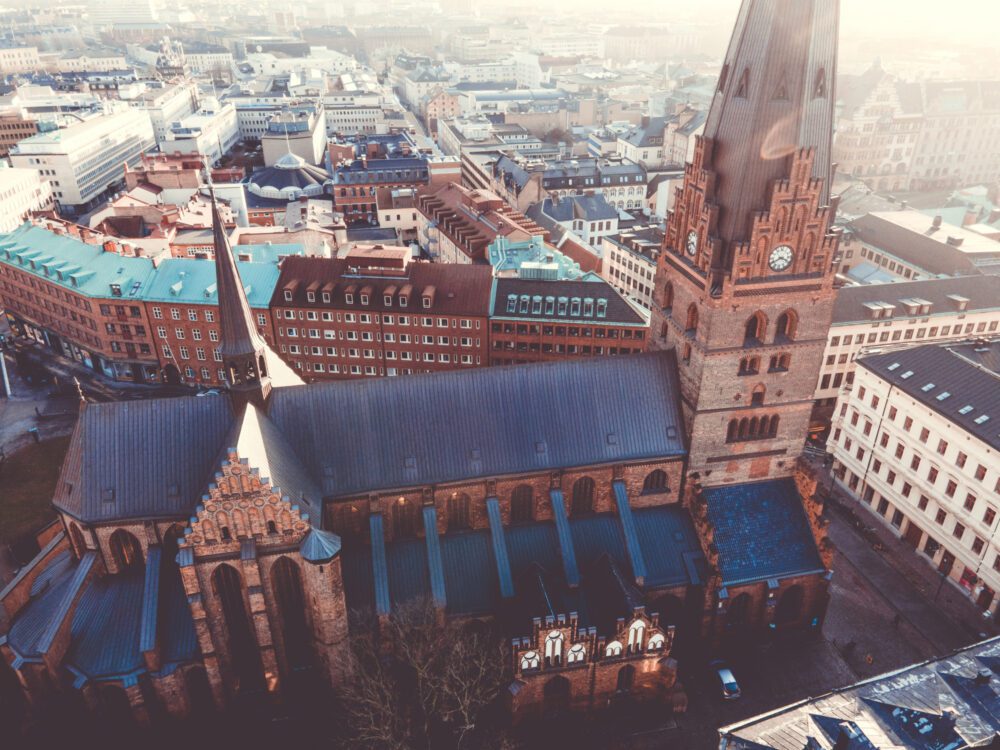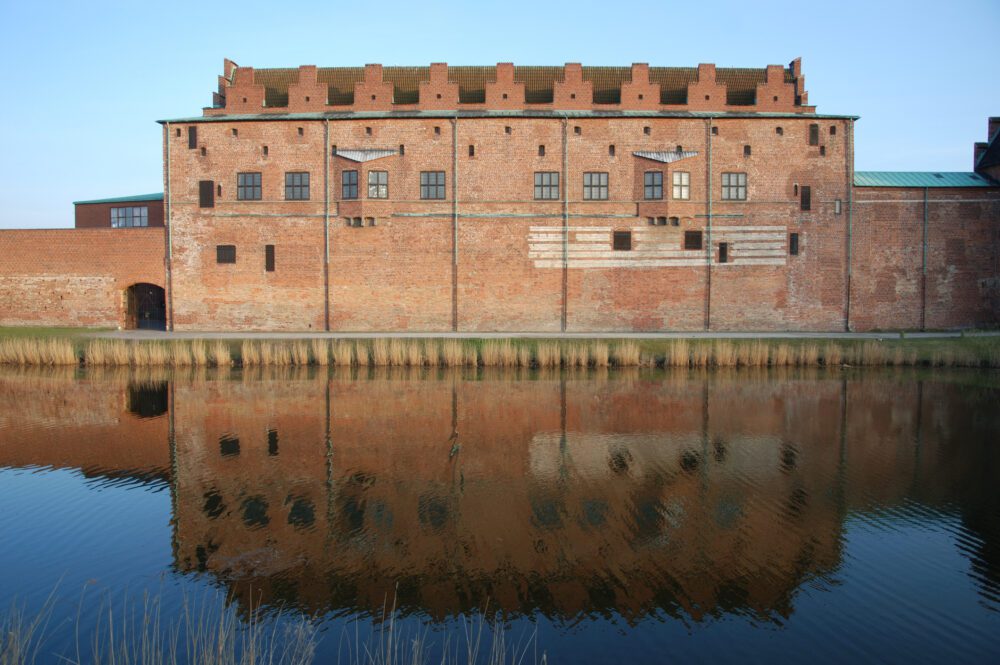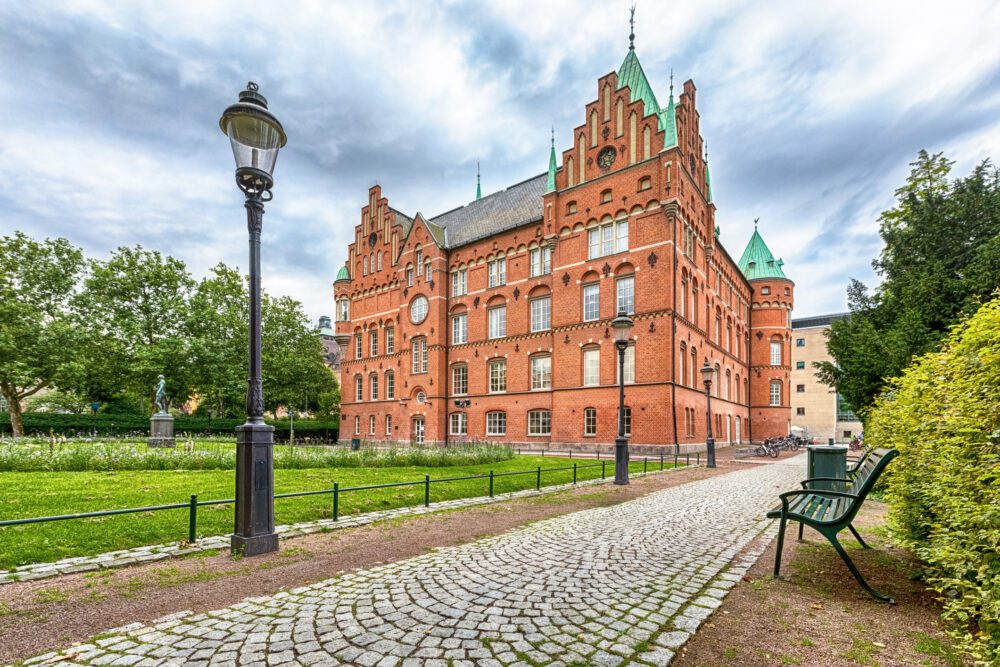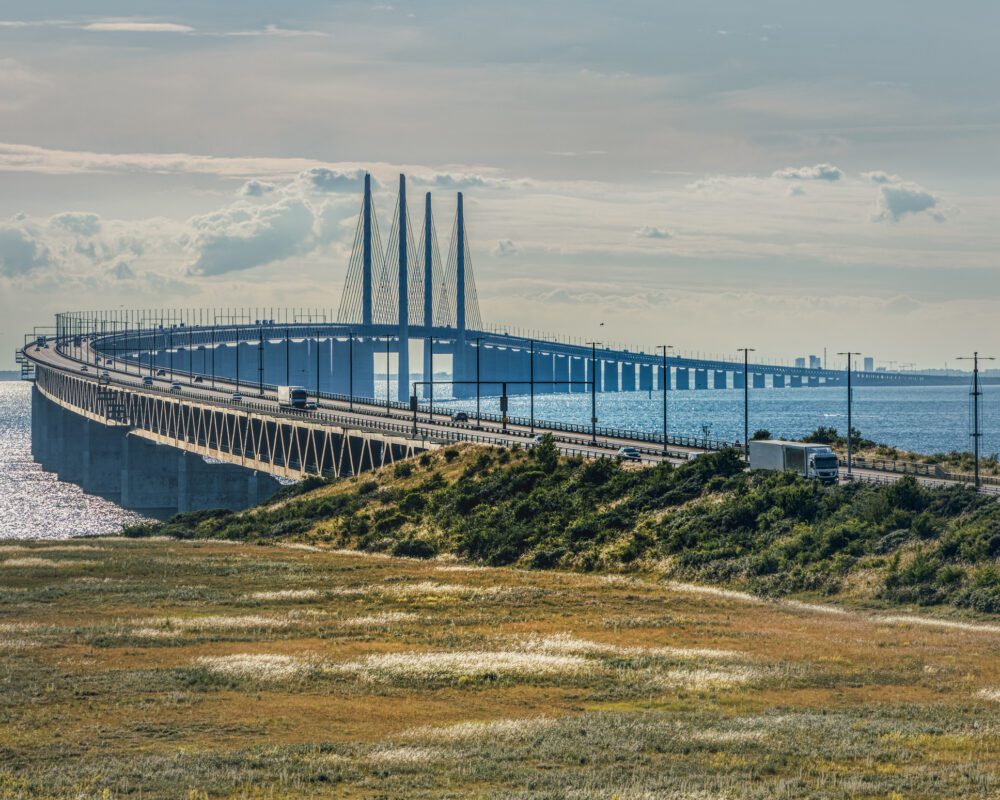
Introduction
Welcome to Malmo, a vibrant city nestled on the southern tip of Sweden and brimming with culture, history, and modern charm. As Sweden’s third-largest city, Malmo boasts a rich tapestry of attractions that seamlessly blend old-world charm with contemporary innovation. From its picturesque canals and historic architecture to its bustling squares and thriving culinary scene, Malmo offers a diverse range of experiences for travellers of all interests. With its strategic location on the Øresund Strait, Malmo has long been a hub of trade and commerce, shaping its identity as a dynamic and cosmopolitan destination where cultures converge and creativity flourishes.
Steeped in history dating back to the Middle Ages, Malmo’s past is intertwined with tales of Viking conquests, medieval trade, and industrial transformation. Once a humble fishing village, Malmo evolved into a prosperous merchant city during the Hanseatic era, leaving behind a legacy of grand buildings, cobblestone streets, and historic landmarks that still dot the cityscape today. In recent years, Malmo has undergone a renaissance, revitalizing its waterfront areas, embracing sustainable urban development, and fostering a vibrant arts and culture scene. With its blend of history, innovation, and Scandinavian charm, Malmo offers visitors a truly unique and exciting destination to explore.
Table of Contents
Map of the Best Things to Do in Malmö
Malmö Old Town
Exploring Malmo’s Old Town is like stepping back in time to a bygone era, where cobblestone streets, medieval architecture, and charming squares evoke the city’s rich history and heritage. Dating back to the 13th century, Malmo’s Old Town, or Gamla Staden, is one of the best-preserved historic districts in Sweden, offering visitors a glimpse into its medieval past. Wander through narrow alleys lined with colourful houses, discover hidden courtyards adorned with intricate ironwork, and marvel at landmarks such as Stortorget, the oldest square in Malmo, and St. Peter’s Church, a Gothic masterpiece that dates back to the 14th century.
When exploring Malmo’s Old Town, be sure to wear comfortable walking shoes, as the cobblestone streets can be uneven. Consider joining a guided walking tour to learn more about the history and architecture of the area, or explore at your own pace with a self-guided tour map. Don’t miss the opportunity to visit the Malmo City Museum, located in the heart of the Old Town, which offers exhibits on the city’s history, culture, and traditions.
St Peter’s Church

St. Peter’s Church, also known as Sankt Petri Kyrka, stands as a magnificent testament to Malmo’s rich architectural heritage and religious significance. Dating back to the 14th century, this Gothic-style church is one of the oldest and most iconic landmarks in the city. Its striking red-brick facade, soaring spire, and intricate detailing make it a sight to behold, drawing visitors and worshippers alike to admire its beauty and history. Inside, the church features stunning vaulted ceilings, elegant stained glass windows, and an impressive organ, creating an atmosphere of serenity and reverence.
When visiting St. Peter’s Church, be sure to check the opening hours, as it may be closed to visitors during religious services or events. Consider joining a guided tour to learn more about the church’s history, architecture, and significance, or explore at your own pace with an informational brochure available on-site. Don’t miss the opportunity to climb the tower for panoramic views of the city and its surroundings, offering a unique perspective on Malmo’s skyline.
Malmö Town Hall

Malmo Town Hall, or Malmo Radhus in Swedish, stands as a striking symbol of civic pride and architectural grandeur in the heart of the city. Designed by architect Ferdinand Boberg and completed in 1546, the town hall is a prime example of Scandinavian Renaissance architecture, characterized by its red-brick facade, ornate detailing, and imposing clock tower. Over the centuries, the building has served as the seat of municipal government and a venue for official ceremonies and events, making it an integral part of Malmo’s cultural and administrative landscape.
Visitors to the town hall can admire its impressive architecture from the outside or explore its interior, which features beautifully decorated halls, historic artefacts, and artworks that showcase the city’s history and heritage. Consider joining a guided tour to learn more about its history, architecture, and significance. Tours are offered in multiple languages and provide insights into the building’s past and present role in the community. Additionally, be sure to check the town hall’s schedule for any special events, exhibitions, or performances that may be taking place during your visit, offering unique opportunities to experience its beauty and cultural significance.
Lilla Torg and Stortorget

Lilla Torg and Stortorget are two of Malmo’s most iconic squares, each with its own unique charm and history. Lilla Torg, or Little Square, dates back to the 16th century and was once the hub of Malmo’s commercial and social life. Today, it remains a bustling gathering place, surrounded by colourful historic buildings that house cafes, restaurants, and shops. Visitors can stroll along its cobblestone streets, admire the charming architecture, and soak in the vibrant atmosphere. During the summer months, Lilla Torg comes alive with outdoor seating, live music, and bustling markets, making it the perfect spot to enjoy a meal or a drink al fresco.
Stortorget, or Big Square, is Malmo’s oldest square and the historic heart of the city. Dating back to the 16th century, it was once the site of markets, festivals, and public gatherings, and today, it continues to serve as a focal point for civic life. Surrounding the square are stately buildings, including the Malmo Town Hall and the imposing Sankt Petri Kyrka (St. Peter’s Church), which add to its grandeur and historic significance. Visitors to Stortorget can admire its beautiful architecture, relax on benches under the shade of trees, or take a stroll along its cobblestone streets. Be sure to visit during the summer months when the square comes alive with outdoor cafes, street performers, and lively events.
Malmö Castle

Malmo Castle, also known as Malmohus Castle, stands as a formidable fortress and a testament to the city’s rich history. Built-in the 15th century by the Danish king Eric of Pomerania, the castle served as a strategic stronghold guarding the approaches to the city and controlling trade along the Øresund Strait. Over the centuries, it witnessed numerous conflicts and power struggles between Denmark and Sweden, serving as a royal residence, a military fortress, and even a prison. Today, Malmo Castle is a popular tourist attraction, offering visitors a fascinating glimpse into its storied past through its well-preserved architecture, exhibits, and museums.
Be sure to explore its various museums, including the Malmo Museer, which features exhibits on local history, culture, and art, as well as the Malmo Art Museum, which showcases a diverse collection of artworks spanning different periods and styles. Consider joining a guided tour to learn more about the castle’s history and significance, or explore at your own pace with a self-guided audio tour. Don’t miss the opportunity to climb the castle tower for panoramic views of the city and its surroundings, offering a unique perspective on Malmo’s skyline.
Kungsparken

Kungsparken, or King’s Park, stands as a serene oasis in the heart of Malmo, offering visitors a tranquil escape amidst lush greenery and scenic landscapes. Originally designed in the mid-19th century by renowned landscape architect Edvard Glæser, Kungsparken is one of Sweden’s oldest public parks and is steeped in history and charm. The park was created on the former grounds of the Malmohus Castle moat and is characterized by its winding pathways, picturesque ponds, and vibrant flower beds.
Consider taking a leisurely stroll along its meandering paths to fully appreciate its natural beauty and peaceful ambience. Be sure to bring a picnic to enjoy in one of the park’s designated picnic areas or simply find a quiet spot to relax and soak in the serene atmosphere. Additionally, consider renting a paddleboat to explore the park’s tranquil ponds or visit the Kungsparken Café for a refreshing beverage or snack. During the summer months, the park comes alive with outdoor concerts, art exhibitions, and theatre performances, offering visitors a unique opportunity to experience the vibrant cultural scene of Malmo.
The Knotted Gun
The Knotted Gun, also known as “Non-Violence,” is a powerful symbol of peace and reconciliation located in Malmo’s Western Harbour district. Created by Swedish artist Carl Fredrik Reuterswärd, the sculpture features a bronze revolver with its barrel tied in a knot, representing the artist’s vision of a world free from violence and conflict. The sculpture was inspired by the tragic death of John Lennon in 1980 and has since become an internationally recognized symbol of peace and non-violence.
When visiting the Knotted Gun, take time to reflect on its profound message and significance, and consider taking a moment of silence to honour victims of violence and advocate for peace. Be sure to bring a camera to capture photos of this iconic landmark, which serves as a poignant reminder of the importance of promoting harmony and understanding in our communities and beyond. The Knotted Gun is located in a scenic waterfront park, making it a popular spot for leisurely strolls, picnics, and outdoor activities.
Turning Torso

The Turning Torso stands as a striking architectural marvel and a symbol of modernity in Malmo’s skyline. Designed by renowned Spanish architect Santiago Calatrava, this 190-meter-tall skyscraper is the tallest building in Scandinavia and one of the most iconic landmarks in Malmo. Its unique twisted form, resembling a human torso in motion, captures the imagination and draws visitors from far and wide to marvel at its innovative design. Completed in 2005, the Turning Torso comprises 54 stories and features a mix of residential apartments, offices, and conference facilities.
While visitors cannot access the interior of the Turning Torso, they can admire its impressive silhouette from various vantage points throughout the city. Consider taking a stroll along the nearby waterfront promenade or visiting one of the rooftop bars or restaurants in the area for panoramic views of this architectural masterpiece. Additionally, the Turning Torso is surrounded by a vibrant neighbourhood with shops, cafes, and cultural attractions waiting to be explored. Be sure to visit the nearby Western Harbour district, where you’ll find waterfront parks, modern architecture, and public art installations
Malmö City Library

The Malmo City Library, located in the heart of the city, is not only a repository of knowledge but also a cultural hub and architectural gem. Designed by renowned architect Henning Larsen and completed in 1997, the library’s modernist design features sleek lines, expansive windows, and spacious interiors that create an inviting and inspiring atmosphere for visitors. The library houses a vast collection of books, periodicals, and multimedia resources, making it a valuable resource for students, researchers, and book lovers alike.
When visiting the Malmo City Library, take time to explore its various sections, including the children’s area, study rooms, and multimedia centre. Be sure to check the library’s schedule for events, workshops, and exhibitions that may be taking place during your visit. These offer unique opportunities to engage with the local community and cultural scene. For those looking to delve deeper into the library’s offerings, guided tours and workshops are available that provide insights into its history, architecture, and collections.
Disgusting Food Museum
The Disgusting Food Museum in Malmo is a unique and unconventional attraction that explores the cultural significance of foods that may be considered repulsive or unappetizing to some. Founded by curator Samuel West, the museum features a collection of over 80 exhibits from around the world, showcasing foods that challenge our notions of taste, smell, and texture. From fermented shark in Iceland to century eggs in China, visitors are invited to experience a sensory journey through the diverse and sometimes bizarre culinary traditions of different cultures.
When visiting the Disgusting Food Museum, come with an open mind and a sense of curiosity. Be prepared to encounter foods that may push your boundaries and challenge your perceptions of what is considered palatable. Consider joining a guided tour to learn more about the cultural significance of the exhibits and the stories behind them, or explore at your own pace with informational signage provided throughout the museum.
Malmö Konsthall
The Malmo Konsthall, or Malmo Art Hall, is a vibrant cultural institution dedicated to contemporary art located in the heart of the city. Established in 1975, the Konsthall has played a pivotal role in showcasing the work of both Swedish and international artists, fostering creativity and dialogue within the local community. Housed in a striking modernist building designed by architect Klas Anshelm, the Konsthall features spacious galleries that host a diverse range of exhibitions, from painting and sculpture to video installations and performance art.
When visiting the Malmo Konsthall, take time to explore its ever-changing exhibitions, which highlight the latest trends and developments in contemporary art. Be sure to check Konsthall’s schedule for special events, artist talks, and workshops that offer unique opportunities to engage with the artworks and artists. Consider joining a guided tour or participating in a workshop to gain insights into the artistic process and learn more about the artworks on display.
Folkets Park
Malmo Folkets Park, or the People’s Park, stands as a beloved cultural and recreational hub in the heart of the city, offering a wide array of activities and attractions for visitors of all ages. Established in 1891, Folkets Park was one of the first public parks in Sweden and quickly became a popular gathering place for locals and tourists alike. Over the years, the park has evolved to reflect changing tastes and trends, but its commitment to providing affordable entertainment and cultural enrichment remains steadfast. Today, Folkets Park boasts expansive green spaces, playgrounds, and walking paths, making it the perfect destination for picnics, leisurely strolls, and outdoor recreation.
When visiting Folkets Park, consider renting a bicycle or bringing along a Frisbee or soccer ball to enjoy the park’s open spaces and facilities. Be sure to explore the park’s various attractions, including its iconic Ferris wheel, carousel, and mini-golf course, which offer fun-filled activities for visitors of all ages. The park is also home to a variety of cultural venues, including theatres, music stages, and art galleries, that host a diverse range of performances, exhibitions, and events throughout the year.
Ribersborg Beach
Ribersborg Beach, commonly known as “Ribban” by locals, is a popular recreational spot located just a short distance from Malmo city centre. This sandy stretch of coastline has been a favourite destination for sun-seekers and bathers since the late 19th century when it was first established as a public bathing area. Over the years, Ribersborg Beach has evolved into a vibrant seaside destination, offering a range of amenities and activities for visitors to enjoy. Consider bringing along a beach towel, sunscreen, and swimsuit to make the most of your time by the water. Be sure to arrive early to secure a prime spot on the beach, especially during the summer months when it can get crowded.
In addition to swimming and sunbathing, Ribersborg Beach offers opportunities for water sports and recreational activities such as beach volleyball, paddleboarding, and windsurfing. The beach is also flanked by a scenic promenade, perfect for leisurely walks or bike rides with picturesque views of the Oresund Bridge and Turning Torso skyscraper in the distance.
Öresund Bridge

The Oresund Bridge is a remarkable engineering feat that connects the Swedish city of Malmo with the Danish capital of Copenhagen, spanning the Oresund Strait. Opened in 2000, this iconic bridge has become a symbol of cross-border cooperation and integration, significantly reducing travel time between the two cities and facilitating economic and cultural exchange in the region. The bridge consists of a combination of road and rail sections, with a total length of nearly 8 kilometres, making it one of the longest combined road and rail bridges in Europe.
In addition to its practical function as a transportation link, the Oresund Bridge has also become a popular tourist attraction in its own right, attracting visitors from around the world who come to marvel at its architectural design and scenic vistas. Consider taking a guided tour or joining a sightseeing cruise that offers views of the bridge from different vantage points, providing insights into its construction, history, and significance. Be sure to bring a camera to capture photos of this impressive structure as it stretches across the shimmering waters of the Oresund Strait.
Day Trip to Copenhagen
Embarking on a day trip to Copenhagen from Malmo opens a gateway to a wealth of historical and cultural treasures waiting to be explored. With a history dating back to the Viking Age, Copenhagen boasts a rich tapestry of architectural landmarks, charming cobblestone streets, and vibrant neighbourhoods. Start your day by crossing the iconic Oresund Bridge, connecting Malmo with Copenhagen, and marvel at the engineering marvel that seamlessly blends Sweden and Denmark.
Upon arrival, immerse yourself in the city’s storied past by visiting landmarks such as the Rosenborg Castle, a stunning Renaissance palace surrounded by lush gardens, and the historic Nyhavn waterfront district, known for its colourful 17th-century townhouses and lively atmosphere. Consider purchasing a Copenhagen Card for unlimited access to public transportation and entry to top attractions, making it easy to navigate the city and maximize your time.
Conclusion
Malmo offers a captivating blend of history, culture, and natural beauty, making it a must-visit destination for travellers seeking a unique and memorable experience. From its historic landmarks such as the Malmo Castle and St. Peter’s Church to its modern architectural marvels like the Turning Torso, the city’s diverse attractions cater to a wide range of interests and tastes. Additionally, Malmo’s vibrant cultural scene, with institutions like the Malmo Konsthall and Disgusting Food Museum, provides opportunities for enriching experiences and thought-provoking exploration.
Whether you’re strolling along the scenic waterfront, indulging in culinary delights, or immersing yourself in the city’s rich cultural heritage, Malmo offers endless possibilities for discovery and adventure. With its welcoming atmosphere, friendly locals, and convenient access to neighbouring cities like Copenhagen, Malmo truly stands out as a gem in the heart of Scandinavia, inviting visitors to uncover its many treasures and create lasting memories.
